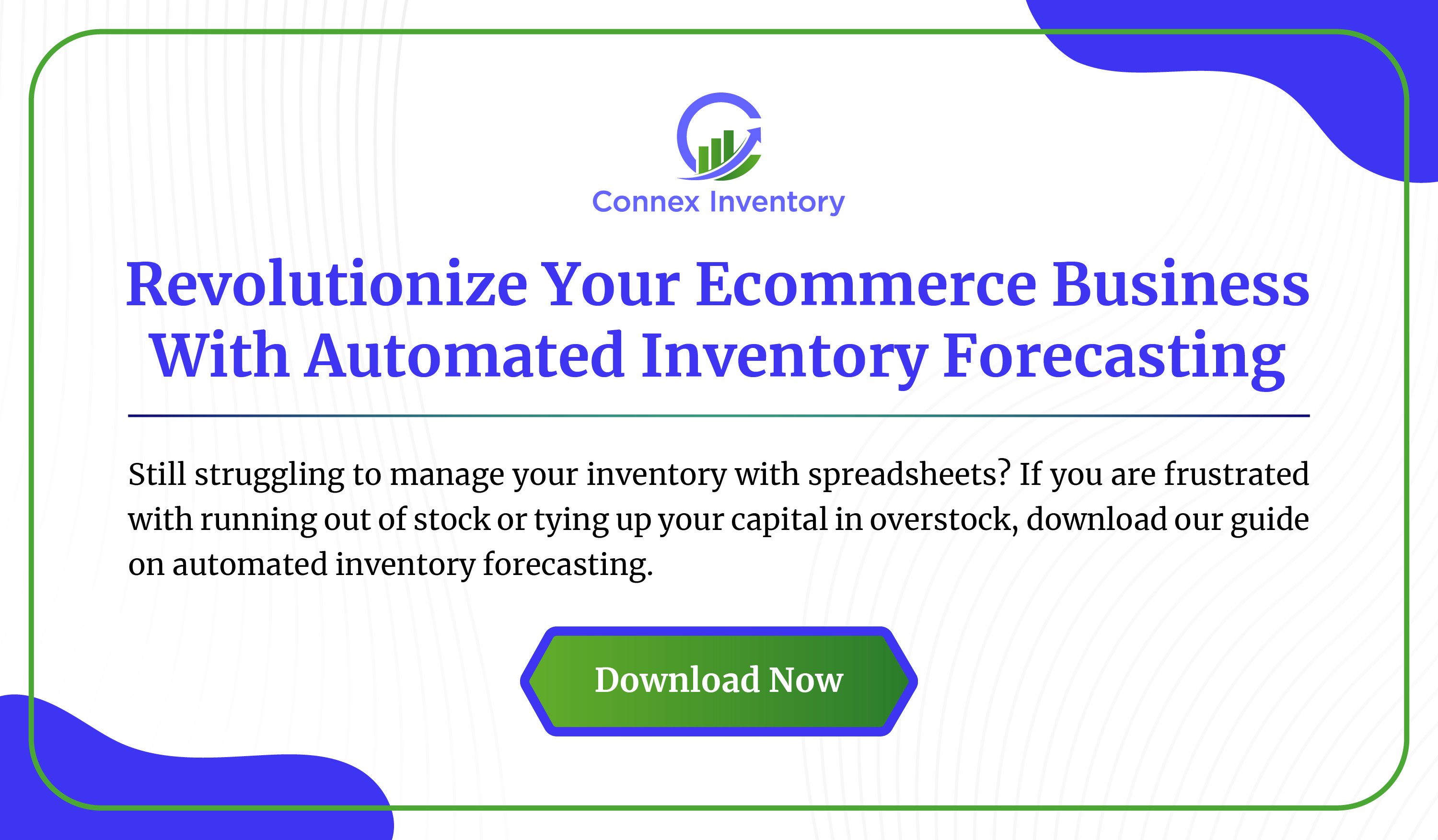Struggling with an abundance of unused stock, or conversely, not having enough of it, has plagued merchants since the advent of commerce. Fresh produce that isn't purchased is wasted, and a shortage of popular items like scarves or trinkets means missed sales.
In the current era, businesses can't fully tap into their earning potential when customer demands can't be met, yet they're burdened by excess inventory when products are slow to sell.
At this juncture, many involved in supply chain management yearn for a tool akin to a fortune-teller's orb that could forecast the trajectory of their offerings. But, alas, it's not that simple.
A report by Retail Wire revealed that retailers lose, on average, 3.2 percent of revenue due to overstocks, which translates to a staggering $123.4 billion loss industry-wide every year. The problem of understocking chips away another 4.1 percent, amounting to a further $129.5 billion decrease in net profits.
Fortunately, the solution to these challenges could lie in an effective inventory management system. Leveraging the right inventory management software allows businesses to strategize effectively, minimizing the risk of ending up with either too much inventory or not enough.
Such a system helps address the issues of excess inventory and surplus stock issues, relieving the strain on warehouse space. This factor often goes unnoticed but contributes significantly to inventory costs.
Properly managed, an inventory management system can counter the repercussions of poor inventory management, bringing balance to your stock levels and your bottom line.
Also read: The Ultimate Guide To Effective Inventory Management
Poor Inventory Management Has Consequences
Neglecting to manage inventory properly can nibble at your profit margins in several ways, including:
-
Poor operations
-
Inadequate personnel
-
Data inconsistencies
-
Theft
-
Supplier-related complications.
However, understanding how maintaining too much or too little inventory influences your overall business operation is equally crucial.
From there, we can explore potential strategies to induce favorable transformations within your organization.
How Much Inventory Should a Business Hold
Pertaining to the question of how much inventory a business should hold, the balance between overstocking and understocking is precarious. Both situations can harm a company's performance significantly.
Overstocking ties up capital and increases storage costs, while understocking risks lost sales when customer demand cannot be met. Inventory management software programs can prove instrumental in addressing these challenges.
These systems provide a continuous flow of accurate data, allowing businesses to track and understand inventory trends in real-time. This real-time insight helps to eliminate data disconnects that can lead to either overstock inventory or insufficiency of stock.
Understanding market trends through an inventory management system enables you to anticipate and effectively meet customer demand. This helps reduce lost sales due to understocking and storage costs associated with overstocking.
In addition, the accurate data these systems provide facilitates better decisions about when to order more inventory and how much to order, minimizing the risk of theft and supplier issues.
Understocking Inventory
Understocking inventory can be defined as a situation with a shortage of items to fulfill customer orders. This condition, often resulting from inefficient inventory management, can lead to several detrimental effects that may not become evident until it's too late. So let's dive into the specific challenges brought on by understocking:
Missed Sales Opportunities
Sales opportunities are inevitably lost when your inventory levels are too low to meet customer demand. Simply put, you can't sell what you don't have. Customers who cannot find the desired products must go elsewhere to fulfill their needs.
Loss of Favorable Price
Staying abreast of economic and market trends can present opportunities to purchase inventory at more favorable prices. For example, in 1994, coffee companies that had not stocked up adequately faced a pricing challenge when coffee prices surged for the next three years. Those that had extra inventory were safeguarded from this unforeseen cost increase.
Missed Discounts
Suppliers often provide discounts to businesses that buy in bulk. If your company only stocks the bare minimum, you could miss out on these cost-saving opportunities, adversely affecting your profit margins.
Infrequent Large Orders
Companies can often save on shipping and processing costs by placing larger orders less frequently. A constant understocking may prevent businesses from capitalizing on these potential savings, thus increasing overall operational expenses.
Lost Consumer Loyalty
Regular instances of running out of stock can undermine consumer confidence in your business. The inability to meet customer needs consistently can lead to losing loyalty, impacting your long-term profitability.
With the help of the right inventory tool; businesses can develop a more effective inventory strategy by leveraging historical sales data and conducting regular inventory audits. These strategies and an inventory management system can help forecast demand accurately, thus determining how much stock is needed to avoid understocking.
In addition, companies can track key performance indicators (KPIs) such as inventory turnover to assess the effectiveness of their strategies.
This proactive approach to inventory management can help maintain optimal stock levels, minimize storage space costs, and prevent instances of having too much stock while ensuring customer demand is consistently met. In turn, this can help strengthen customer loyalty and boost profitability.
Also Read: Top E-commerce Inventory Mistakes And How To Avoid Them
Avoiding Overstocking
Managing surplus inventory can be challenging, but you can avoid overstocking effectively with strategic approaches and appropriate tools. Here are some strategies to consider:
Implement an Effective Inventory Management Technique
One such method is the First-In, First-Out (FIFO) principle, where the oldest inventory is dispatched first. This technique requires a well-organized warehouse and meticulous record-keeping. Still, it is worth the extra effort as it ensures a consistent flow of goods and reduces the likelihood of having excess stock.
Establish Minimum and Maximum Inventory Levels
Setting these levels is crucial in maintaining balance in your inventory. While minimum levels safeguard against understocking, maximum levels prevent overstocking. However, maximum levels may fluctuate depending on seasonality or sales trends.
Key performance indicators (KPIs) can provide insights into what these levels should be and how they may vary throughout the year.
Maintain a Single Source of Truth for Inventory
Keeping all your inventory data in a single, reliable system ensures accuracy and helps maintain optimal stock levels. This system should provide real-time and accessible data so everyone in the organization can access the most up-to-date inventory information.
Both overstocking and understocking can have detrimental effects on your business operations and profits. However, investing in a robust inventory management system and strategy can help navigate these challenges, ensuring you meet customer demand without overburdening your storage space or capital. Therefore, managing your inventory effectively isn't just sensible - it's essential for the sustainability and growth of your business.
Also read: Importance of Inventory Management Software
Wrapping Up
Managing inventory can be complex and challenging, especially maintaining a balance between overstocking and understocking. The good news is that businesses can navigate these complexities more efficiently with a solution like Connex.
Our comprehensive inventory management system can provide real-time, accurate data, making forecasting demand, tracking inventory turnover, and setting optimal inventory levels easier.
By harnessing the power of Connex, businesses can ensure they are always equipped to meet customer demand without burdening their storage space or tying up capital in surplus inventory.
This improves operational efficiency and significantly boosts the bottom line, making Connex an indispensable tool in today's competitive marketplace.




